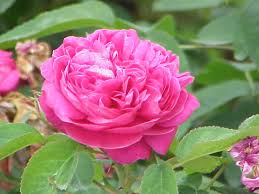
Flowers hold immense economic value beyond their aesthetic appeal, with certain species commanding significant prices and driving lucrative industries worldwide. From ornamental flowers used in floral arrangements to medicinal blooms cultivated for pharmaceutical purposes, the commercialization of flowers spans diverse sectors, contributing to global trade and economic growth. Let’s delve into the world of high-value flowers and explore their commercial applications.
**1. Roses:**
*Roses are perhaps the most iconic and commercially valuable flowers, cultivated for their beauty, fragrance, and symbolism. They are extensively used in the floral industry for bouquets, wedding decorations, and special occasions. Additionally, roses are processed into essential oils, perfumes, and cosmetics, commanding high prices in luxury markets.*
**2. Orchids:**
*Orchids are prized for their exquisite blooms and diverse colors, shapes, and patterns. They are highly sought after in the floral trade for ornamental purposes, with rare and exotic varieties fetching premium prices. Orchids are also cultivated for their use in floral arrangements, corsages, and decorative displays, contributing to the multi-billion-dollar global orchid industry.*
**3. Lilies:**
*Lilies are revered for their elegant appearance and delicate fragrance, making them popular choices for floral arrangements and bouquets. Oriental lilies, in particular, are valued for their large, showy flowers and are extensively used in the cut-flower trade. Lilies are also cultivated for their bulbs, which are sold as a gourmet food item and used in traditional medicine.*
**4. Peonies:**
*Peonies are prized for their large, lush blooms and enchanting fragrance, making them highly desirable in the floral industry. They are cultivated for cut flowers, wedding bouquets, and floral arrangements, with demand peaking during the wedding season. Peonies are also used in the production of perfumes, cosmetics, and herbal remedies.*
**5. Chamomile:**
*Chamomile is renowned for its medicinal properties and is widely used in the pharmaceutical and herbal industries. It is cultivated for its daisy-like flowers, which are dried and used to produce chamomile tea, herbal extracts, and essential oils. Chamomile is valued for its soothing and anti-inflammatory properties and is used in skincare products, aromatherapy, and traditional medicine.*
**6. Saffron Crocus:**
*Saffron, derived from the stigma of the saffron crocus flower, is one of the most expensive spices in the world by weight. It is prized for its distinctive flavor, aroma, and vibrant color and is used in culinary, medicinal, and cosmetic applications. Saffron cultivation is labor-intensive, with each flower yielding only a small amount of saffron threads, contributing to its high market value.*
**7. Gypsophila:**
*Gypsophila, commonly known as baby’s breath, is a popular filler flower in floral arrangements and bouquets. It is valued for its delicate, cloud-like clusters of tiny white flowers, which complement larger blooms and add texture to floral designs. Gypsophila is extensively used in the cut-flower industry and is cultivated in large quantities for export.*
**Conclusion:**
In conclusion, high-value flowers play a significant role in various industries, from floriculture and horticulture to pharmaceuticals and cosmetics. By harnessing the beauty, fragrance, and versatility of flowers, businesses capitalize on their commercial potential, driving economic growth and innovation. As consumer demand for high-quality flowers continues to rise, the market for these floral treasures remains robust, offering lucrative opportunities for growers, exporters, and entrepreneurs alike.










